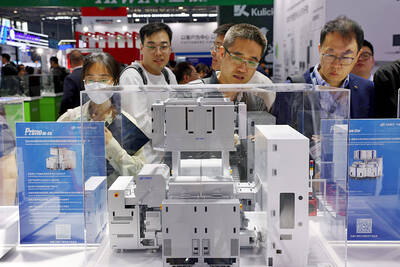Singapore stock traders might finally get their lunch break back.
Singapore Exchange Ltd (SGX), which runs the city-state’s equity market, is considering reinstating the mid-day intermission, according to people familiar with the matter.
SGX in 2011 scrapped the break, which lasted from 12:30pm to 2pm every day, in an effort to boost trading.
The bourse is expected to have a public consultation on the issue in the coming weeks, the people said, asking not to be identified, as the information is private.
SGX would also propose a test that would widen the price increment at which shares are quoted to bring day traders back, according to the people.
When SGX cut the mid-day break, then-chief executive officer Magnus Bocker said in January 2011 the move would make Singapore “one of the most accessible markets in Asia and in the world.”
Having continuous trading from 9am to 5pm could also boost volume by as much as 10 percent, Bocker said.
The daily average value of shares traded on SGX this year has risen 6.4 percent, to US$809 million, compared with the average for last year, according to data compiled by Bloomberg.
While up from last year, it is down from the US$1.12 billion-a-day the market saw in 2013, the data show.
SGX said in an e-mailed response to queries that it does not comment on speculation.
The exchange’s tick-size proposal would reward brokers for making markets in less liquid stocks by widening the spread they earn when buying and selling shares, the people said.
That could encourage trading in small-cap companies, they said.
If the plan goes ahead, it would be at least the third time in a decade that SGX has tweaked stock spreads. In 2011, it cut tick sizes to offer what it called “one of Asia’s most cost-competitive trading environments.” It made a similar move in 2007.
SGX in 2015 cut the board lot size, or trading unit, investors needed to buy to 100 from 1,000 to help make higher-priced shares easier to invest.
Last year, it consulted on having at least 10 percent of shares in the initial public offering of companies on its main venue to boost retail participation.

With this year’s Semicon Taiwan trade show set to kick off on Wednesday, market attention has turned to the mass production of advanced packaging technologies and capacity expansion in Taiwan and the US. With traditional scaling reaching physical limits, heterogeneous integration and packaging technologies have emerged as key solutions. Surging demand for artificial intelligence (AI), high-performance computing (HPC) and high-bandwidth memory (HBM) chips has put technologies such as chip-on-wafer-on-substrate (CoWoS), integrated fan-out (InFO), system on integrated chips (SoIC), 3D IC and fan-out panel-level packaging (FOPLP) at the center of semiconductor innovation, making them a major focus at this year’s trade show, according

DEBUT: The trade show is to feature 17 national pavilions, a new high for the event, including from Canada, Costa Rica, Lithuania, Sweden and Vietnam for the first time The Semicon Taiwan trade show, which opens on Wednesday, is expected to see a new high in the number of exhibitors and visitors from around the world, said its organizer, SEMI, which has described the annual event as the “Olympics of the semiconductor industry.” SEMI, which represents companies in the electronics manufacturing and design supply chain, and touts the annual exhibition as the most influential semiconductor trade show in the world, said more than 1,200 enterprises from 56 countries are to showcase their innovations across more than 4,100 booths, and that the event could attract 100,000 visitors. This year’s event features 17

Germany is to establish its first-ever national pavilion at Semicon Taiwan, which starts tomorrow in Taipei, as the country looks to raise its profile and deepen semiconductor ties with Taiwan as global chip demand accelerates. Martin Mayer, a semiconductor investment expert at Germany Trade & Invest (GTAI), Germany’s international economic promotion agency, said before leaving for Taiwan that the nation is a crucial partner in developing Germany’s semiconductor ecosystem. Germany’s debut at the international semiconductor exhibition in Taipei aims to “show presence” and signal its commitment to semiconductors, while building trust with Taiwanese companies, government and industry associations, he said. “The best outcome

Semiconductor equipment billings in Taiwan are expected to double this year, as manufacturers in the industry are keen to expand production to meet strong global demand for artificial intelligence applications, according to SEMI, which represents companies in the electronics manufacturing and design supply chain. Speaking at a news conference before the opening of Semicon Taiwan trade show tomorrow, SEMI director of industry research and statistics Clark Tseng (曾瑞榆) said semiconductor equipment billings in Taiwan are expected to grow by an annual 100 percent this year, beating an earlier estimate of 70 percent growth. He said that Taiwan received a boost from a